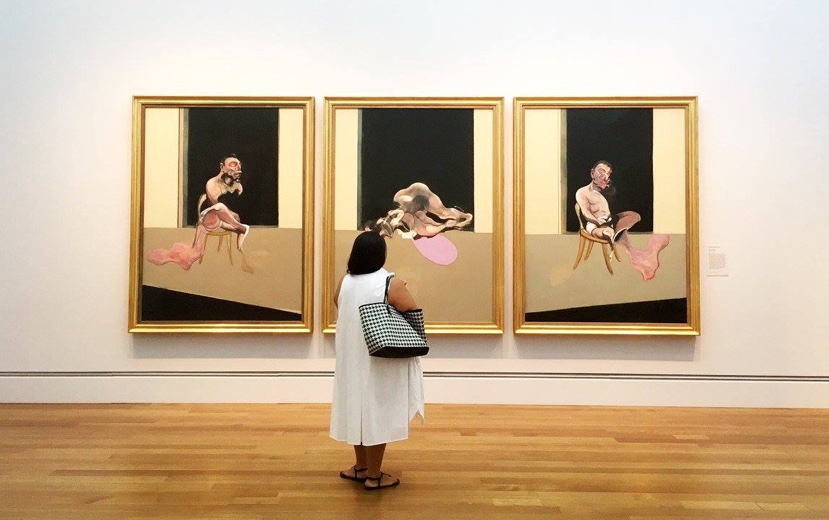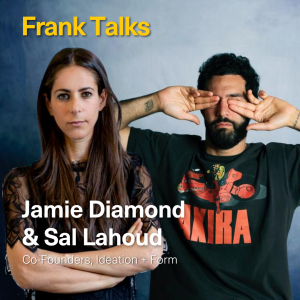This week we sit down with Erika Hirugami, who is the founder and CEO of CuratorLove. Erika holds a MA in Art Business from the Sotheby’s Institute of Art, in conjunction with the Drucker School of Management and Getty Research Center at Claremont Graduate University. Erika also holds multiple BAs from UCLA in the fields of Art History, Chicano Studies and Mexican Studies. Not only is Erika a Getty and Kress Foundation Fellow but also Erika has developed curatorial statements at museums such as CMA, MOLAA, MAZ, MUAC, and Bellas Artes, in Mexico City. After being a Public Art Curator for the Department of Cultural Affairs in the City of Los Angeles, Erika became the Curatorial Director for the Ronald McDonald House Charities. She has also curated for various galleries across the globe and has been published internationally. This curator has her hands full and we are thrilled to share her diverse experience in the arts with you here.
What was your first job in the Arts?
I was the Art Director for a multi-national publishing house. I’ve been hooked since. But this was more art-adjacent than in the art world. I went from there to a Curatorial/Editorial position at a Museum.
What was the most useful or important thing you learned at that job?
How to collaborate with partners in different countries. Team driven outcomes have greater depth than single person ideas and hierarchical structures are not beneficial to the creative process.
Tell us a little more about yourself. When did you realize you wanted to pursue a career in this industry?
During my time as an art director in publishing, the job reminded me of my passion for art history, and it encouraged me to go back to school. Undergrad pushed me to think like a curator, and grad school made me realize there is so much more.
What do you do now?
I lead a global arts enterprise as the Founder & CEO at CuratorLove.
Where are you from?
I was born in Guadalajara-Mexico, and I am Jaxican (half Japanese, half Mexican).
What is the arts community like there?
The contemporary art scene is just like any other major metropolitan area – many museums, many galleries and lots of great artists. But unlike Los Angeles (where I live now), artisans and craftsmen also influence contemporary aesthetics. So it’s a wonderfully colorful blend of magic.
Has where you come from shaped what you do in the arts today?
Definitely, I am deeply involved with Latinx art because of my roots.
What is the best piece of advice you can give about working in the art world?
The worst thing that can possibly happen is someone saying “no,” and in the larger scope of life, that is really not the worst thing ever. When in doubt ask, build your tribe, surround yourself with people who know more than you.
What is one of your greatest accomplishments in your career so far?
Many of my greatest accomplishments have also been deep challenges, and a few I am not even allowed to legally discuss. But one of my all time favorite things to happen to me; was being asked to work on a project with my all-time favorite artist alive in the world, the same day I presented my grad thesis.
What has been a challenge for you?
My intersectionality for sure; I am Mexican, a female, a CEO, a curator, a published author, and a millennial. This is not the most popular amongst my peers. But it is also something I am deeply proud about, my intersectionality is what drives my mission.
What is something you do every day at work?
Read about the art world, everything from art law to the latest institutional concerns. That is actually how I start my day, everyday. Forbes, Artsy, Hyperallergic, Artnet, The Times, and a cup of tea.
What is one of the weirdest things you have had to do on the job in your career?
Define weird? In my field, snakes can hold artist residencies at museums and artists that play with dirt make it to biennials! I don’t think of weird in the same context as most I suppose.
What defines a good employee? What defines a good boss?
I don’t believe in such a hierarchical dichotomy. Everyone I work with is my partner, from the carpenters that build my temporary walls to the directors of the institutions that I work with. Our responsibilities are just different but at the end of the day, we are one group of individuals coming together to transcend aesthetic praxis.
What do you think makes a person hirable?
Eagerness to learn, flexibility in working within a team, having innovative ideas, not being afraid to ask questions, and being honest about making mistakes.
What is your advice to making yourself stand out in your workplace?
If something doesn’t make sense, ask. There’s a reason you feel something is wrong. If you have an idea, share it. It takes a village to create something amazing, and inspiration comes from everywhere.
What are things you can do proactively boost your CV?
Constantly update your CV, it’s a living document. Also design never hurt nobody.
Are there any tips you can give people entering the workforce?
Reach out to people who have similar positions to what you are seeking to do, so they can tell you the reality of the job you’ve been idealizing: a title and a position are two very different things. Also internships are great to help you decide what you don’t want to do. It helps the company, but it also helps you not waste two years of your life in a position that is not right for you.
In your experience, what are things to do and things to avoid during an interview?
Pregame, always pregame… lots of research. Know who is interviewing you and ask questions. Avoid not being whatever brand of professionalism you are. Most jobs environments are set before you and will be there after you, the corporate culture of the environment is what you will have to live with, so make sure that it is a good fit for you.
What is the best exhibition you have seen in the last year?
Oh this is a hard question… A handful of the PST exhibitions in LA where amazing in this last round. But I would have to go with Theater of Disappearance at MOCA Geffen, I loved Adrian Villar Rojas’ vision and the risks that MOCA took in making this particular exhibition come alive!




